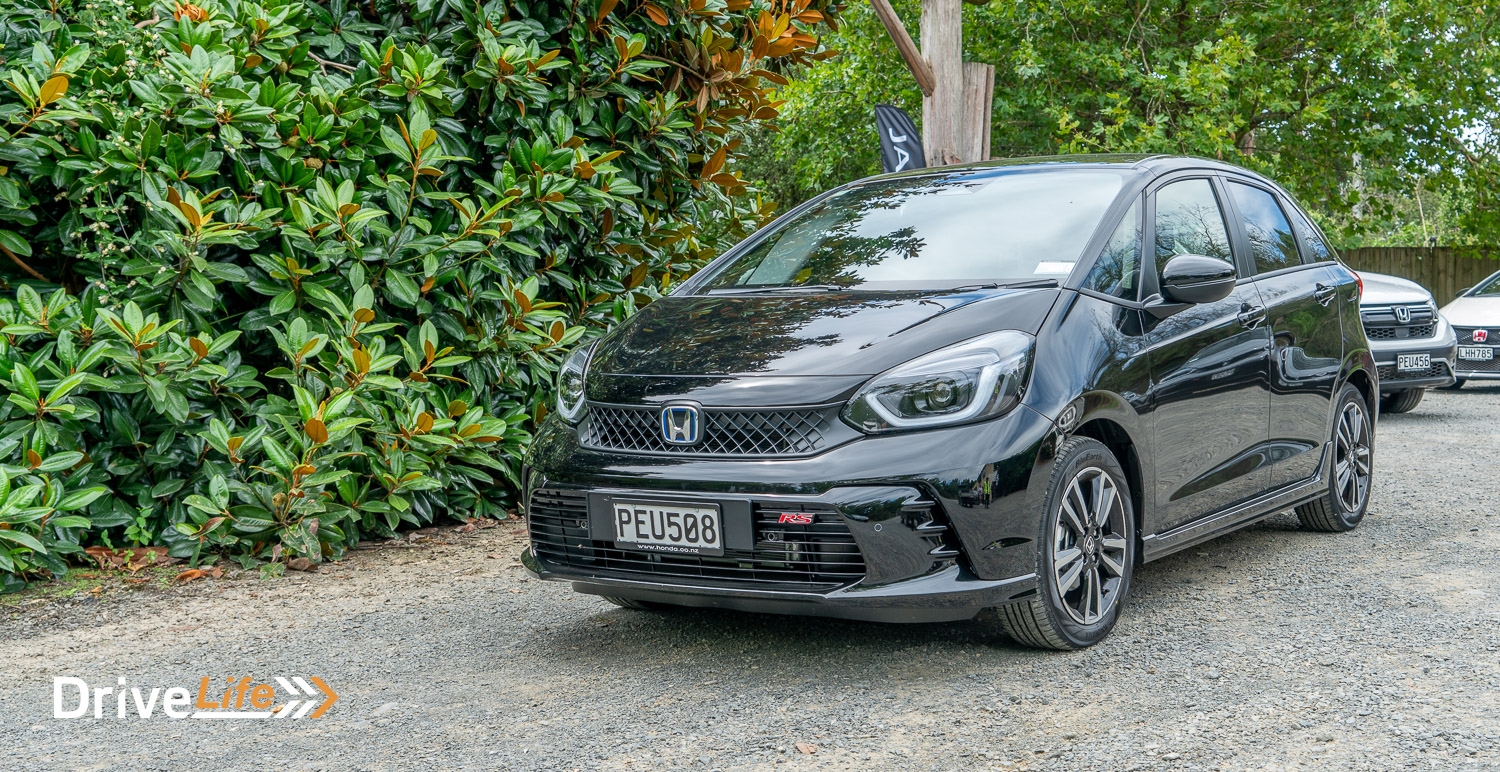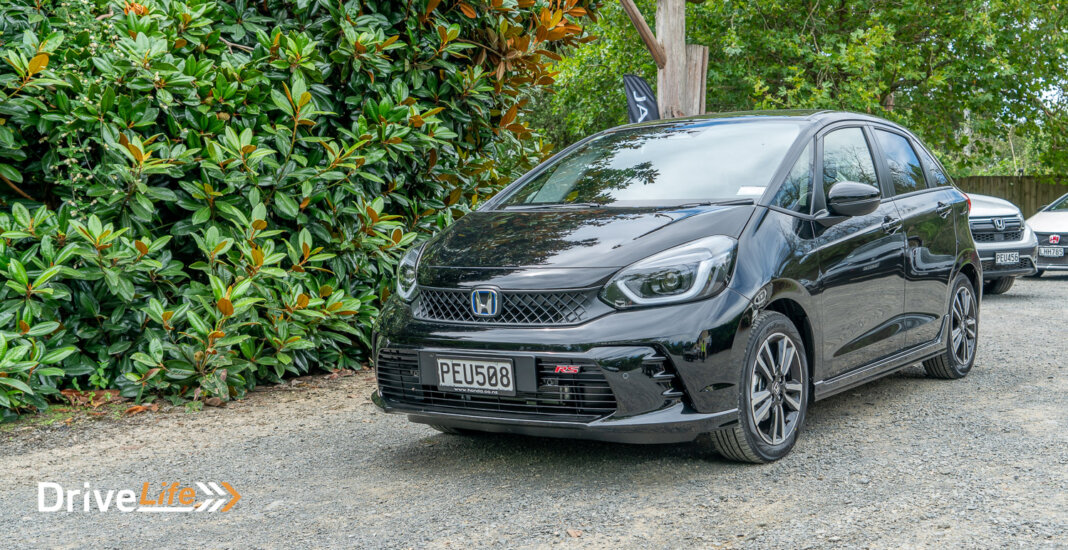The Honda Jazz is a ubiquitous little supermini, which has been a boon for the brand since it arrived in New Zealand in 2002. Since arriving, the Jazz’s clever design and reliability has provided plenty of utility to owners, even if they’re mostly part of an older demographic.
The newest 4th generation Honda Jazz reached our shores in 2021, with three new models to replace the two previous-gen Jazz S and Jazz RS models. This week, the brand revealed that they’re reintroducing the Jazz RS, which Honda claims to have instilled Honda’s sports DNA into the design. The same sports DNA which inspired the modern Civic Type R, Honda proclaims.
Honda extended an invitation to DriveLife to give us a peak at the new Jazz RS.
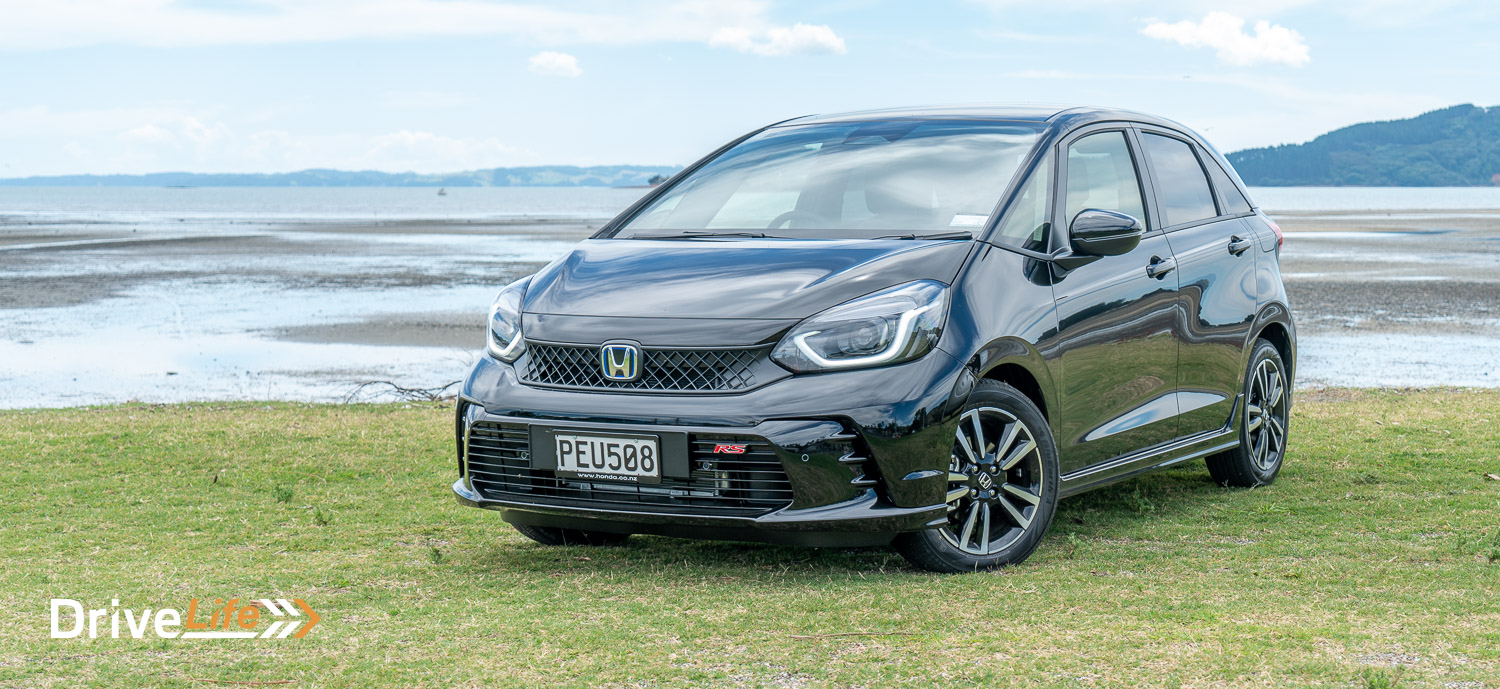
The Range
The pricing point of the new Jazz RS slots right into the middle of the Jazz range, unlike the previous generation where the Jazz RS was the top-spec variant.
| Model | Price |
| Honda Jazz Crosstar – 1.5L i-VTEC | $30,700 + ORC |
| Honda Jazz e:HEV RS | $36,700 + ORC |
| Honda Jazz e:HEV Luxe Sport | $37,000 + ORC |
Honda reckons there’s a Jazz for every kind of buyer, with the introduction of the fourth-generation Jazz RS making the range more diverse than ever.
The Jazz Crosstar caters to a buyer who’s after something slightly more rugged than your standard Jazz, benefiting from extra body cladding, elevated ride height and roof rails.
The Jazz RS is for the buyer after a more engaging everyday driving experience.
Finally, the Jazz Luxe Sport is for the buyer, who doesn’t mind shelling out more from their wallet for some extra creature comforts.
While the range is more diverse, it hasn’t actually expanded. The introduction of the RS comes with the departure of the entry level, Jazz Life, which sat below the $30,000 mark.
You can check out our reviews on the Jazz Crosstar and Jazz Luxe Sport.
The diverse range should help with Honda New Zealand’s ambitious goal of shifting over 2000 units in 2023. Honda did manage to shift 1606 Jazz’s in 2022, which well outstrips the Toyota Yaris Hybrid at 522 units and the Suzuki Swift Hybrid at 145 units.
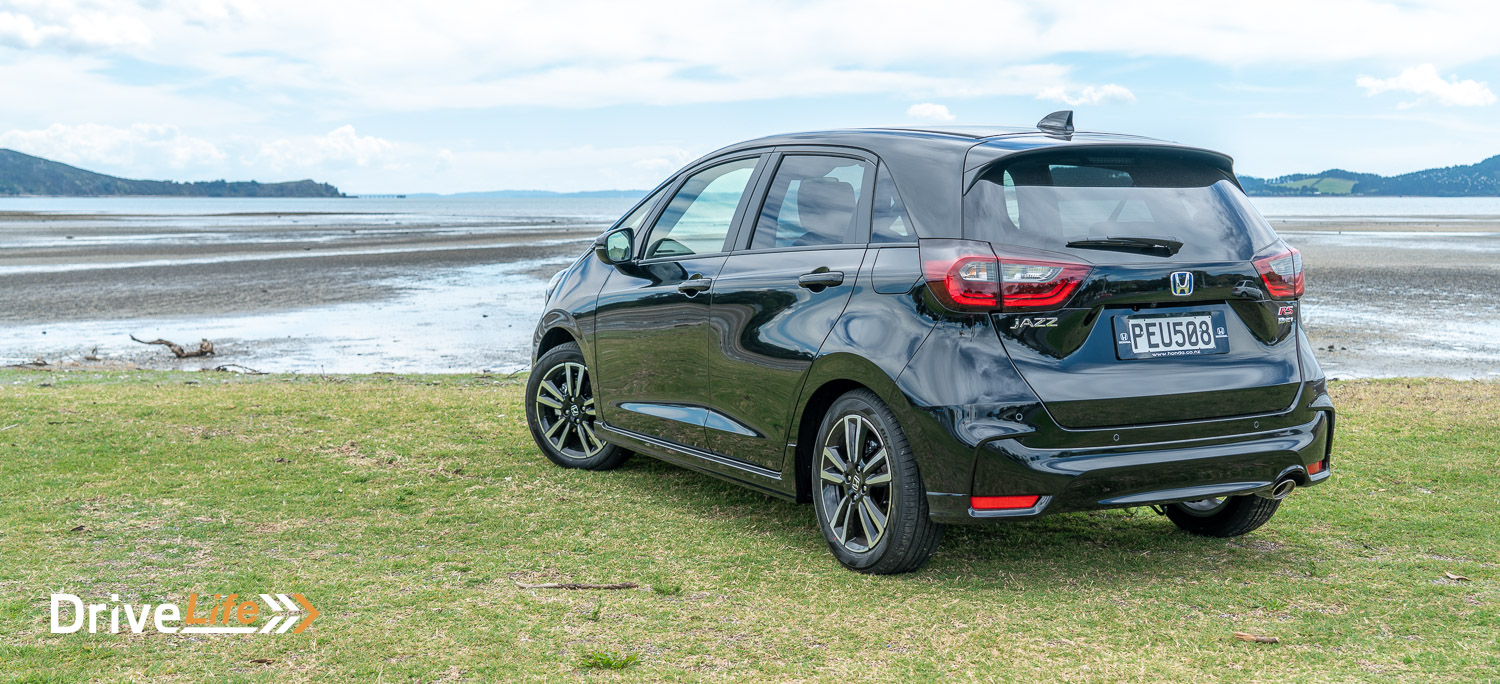
The new 2023 Honda Jazz RS
So, what’s different about the Jazz RS? More than you’d probably think.
At the front, there’s a new cross weave grille and a new bumper, which replaces the old ‘underbite’ style bumper with a wider, more assertive design. There are more sporty additions moving to the rear, including new side-skirts, a new sportier rear bumper, plus an RS exclusive roof spoiler. The whole car sits on RS specific 16’’ alloys, along with several blacked-out accents, including black door mirrors, pillar garnishes and headlight rings.
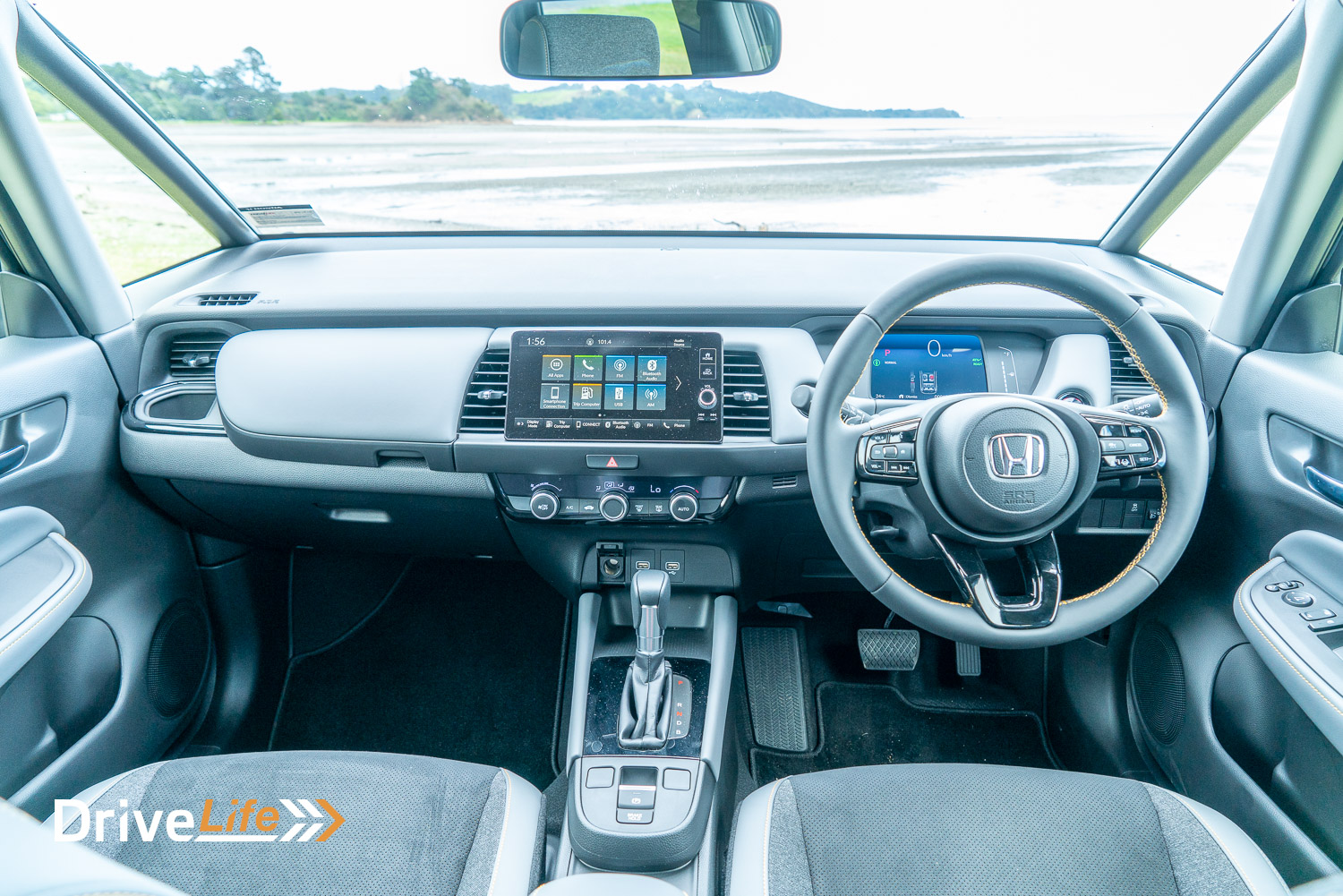
On the inside, the interior is reupholstered in premium grey ultra-suede material, with contrast yellow stitching wrapping the seats and steering wheel. The rest is largely unchanged, which is a good thing given all the creature comforts the Jazz has as standard.
Underneath the bonnet of the Jazz RS is where the more significant changes have occurred.
The 1.5-litre 4-cylinder engine and electric motor combination, which is also used in the Luxe Sport, has been tweaked for more performance. The electric motor outputs an additional 10kW of power, lifting the total output to 90kW of power and 253Nm of torque. The generator motor has gained 8kW of power, lifting its output to 78kW, while the 1.5-litre petrol engine has gained 7kW, producing a total output of 78kW of power and 127Nm of torque.
You might have a slightly perplexed look after hearing all these numbers. Engines, electric motors, and generators, what’s all this? You might be thinking. Allow me to explain.
Honda’s hybrid powertrain is different to other battery hybrid vehicles. The electric motor does the majority of the driving, with the engine working as a generator to recharge the battery. Once you’re up to highway speeds (where electric motors are disadvantaged), a clutch engages which switches the driving over to the petrol engine. It doesn’t use both the engine and the electric motor at the same time, but instead uses the right one for the right driving environment.
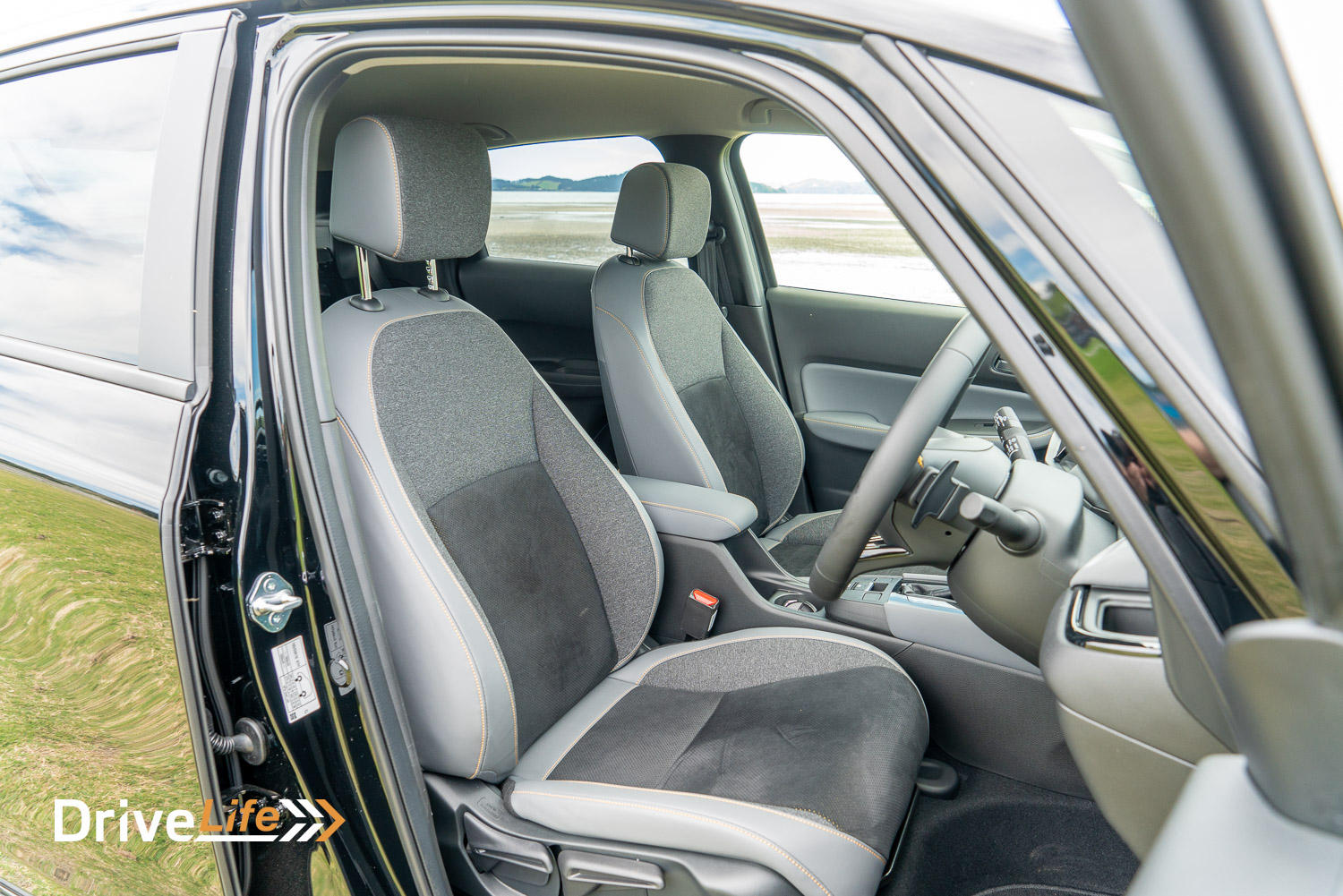
Confused? I don’t blame you if you are. What isn’t confusing is the fuel economy, which Honda claims is 3.8L per 100 kilometres.
The Jazz RS newly introduces driving modes, being Normal, Eco and Sport. Sport tensions up the steering, changes the throttle sensitivity and will elevate the “step-shift” point to a higher rpm. I say “step-shift” because the Honda Jazz uses a single gear e-CVT, which doesn’t shift like a conventional automatic. However, the “step-shift” is designed to make it feel that way.
The Jazz RS also introduces regenerative braking, or as Honda terms it, the “RS Deceleration Selector”. It’s controlled via paddles behind the steering wheel, which adjusts the amount of friction which contributes to energy regeneration. It’s essentially the same tech found in battery electric vehicles like the Hyundai Ioniq 5.
Another significant change to the suspension. The Jazz RS introduces a new spring and damper set-up, which has better dampening, altered spring rates – softer at the front, and stiffer at the rear – along with new front stabiliser bars and bushings. Honda claims the changes improve handling responsiveness and stabilise the roll posture, along with delivering better performance over rougher surfaces.
As you can now tell, the new Jazz RS is more than just an aesthetics package. Now, how does it drive?
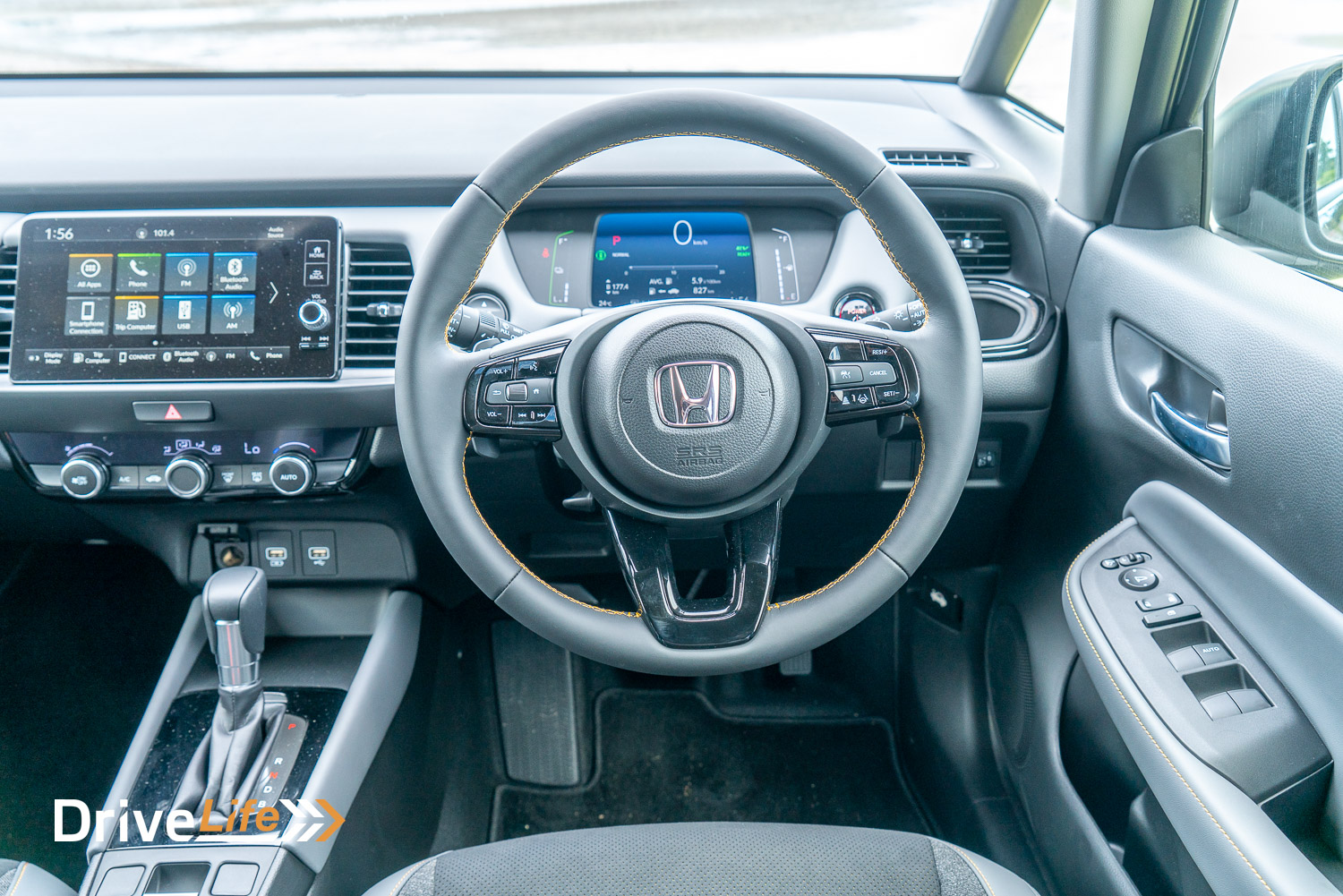
Driving the new 2023 Honda Jazz RS
Okay, so Honda’s possibly stretching the truth when they say the Jazz RS instils Honda Sports DNA. But, it’s a more attention-grabbing headline than simply saying “we’re going to make this Jazz drive and handle better” and then also saying “remember, we’re quite good at doing this”.
Based on Honda’s history with their Type R models, it’s well and truly evident that Honda knows what they’re doing when it comes to making small cars and making them handle like nothing else.
So, has Honda worked their magic with the new Jazz RS?
The performance is noticeably warmer, but the experience isn’t radically different. After-all, it’s not like Honda has turbocharged the thing. Still, the extra power and responsiveness does pay dividends on the twisties when powering out of a corner. It should also make for slightly less nervous passing manoeuvres on the open road.
The altered suspension set-up was the most impressive change. I gulped when Honda said they fitted stiffer springs, because that’s usually code for saying the ride quality has been made worse. However, Honda’s struck a goldilocks zone with the damping on the RS.
We tested the Jazz RS around the roads of Clevedon in Auckland, which has some tight, technical and patchy sections of road. It’s not too dissimilar from some of New Zealand’s state highways.
In sections where previous Jazz models could get a tad wayward, this new Jazz RS experienced nothing of the sort. It’s quick to turn and it’ll handle tidily through a corner with good front end control and little body-roll. Moreover, the ride quality and body control at speed seemed to perform well-above average for this class of vehicle.
In the right environment, you can indeed have some fun in the Jazz RS.

Final thoughts
So, what are our first impressions?
I was impressed by the Jazz RS. Sure, the Jazz RS mightn’t be particularly flashy, nor can I seem to identify the Sports DNA which Honda claims to have influenced the design, but despite this, the Jazz RS is an incredibly well-rounded compact hatch.
The powertrain and suspension changes performed excellently during our short jaunt across some tight and technical patches of road. Combine this with the already well-rounded package which the Honda Jazz is, and you’ve got a seriously competent little supermini. I’d be willing to bet that you could happily tour all corners of the country in the Jazz RS and not receive one complaint about the overall performance.
At this price point, the Jazz RS appears tough to beat. It should be well-received by many kiwi buyers – and I’m not strictly talking about the older generation, either.
We’re certainly keen to get our hands on one for an in-depth review later this year.
